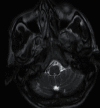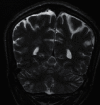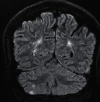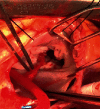Atypical Presentation of Anti-Phospholipid Antibody Syndrome with Seizure and Atrial Mass
- PMID: 33281902
- PMCID: PMC7685806
- DOI: 10.1155/2020/8877445
Atypical Presentation of Anti-Phospholipid Antibody Syndrome with Seizure and Atrial Mass
Abstract
Anti-phospholipid antibody syndrome (APS) has a broad spectrum of thrombotic and nonthrombotic clinical manifestations. The diagnosis requires a set of clinical criteria of thrombosis along with persistently positive anti-phospholipid antibody tests. In this report, we are presenting a case of APS, who is a 38-year-old male, presented with complains of seizures and found to have stroke, which on further investigation revealed to have been caused possibly from a left atrial mass. Therefore, high index of suspicion is required for the diagnosis of APS in young patients, who present with various neurological and cardiovascular manifestations, mostly secondary to thrombosis.
Copyright © 2020 Rajish Sanjit Kumar Shil et al.
Conflict of interest statement
The authors declare no conflicts of interest.
Figures







References
Publication types
LinkOut - more resources
Full Text Sources
Miscellaneous

